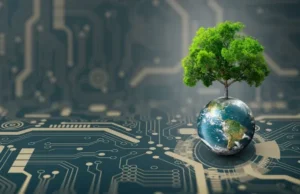
As the world grapples with the effects of climate change and environmental degradation, the logging industry is undergoing a significant transformation. Eco-friendly logging practices are emerging as crucial solutions to balance economic needs with ecological preservation. In 2024, various trends and technologies are set to redefine how logging is conducted, ensuring that forests are managed sustainably while meeting the increasing demand for timber and wood products. This article explores these trends and technologies that are shaping the future of eco-friendly logging.
The Importance of Eco-Friendly Logging
Logging has historically contributed to deforestation, habitat destruction, and biodiversity loss. However, eco-friendly logging practices aim to minimize these negative impacts by promoting sustainable forest management. This approach not only helps preserve ecosystems but also ensures that local communities benefit economically from forest resources. As consumer awareness about environmental issues grows, the demand for sustainably sourced timber is rising, prompting the logging industry to adapt.
Key Benefits of Eco-Friendly Logging
- Biodiversity Conservation: Sustainable logging practices help maintain biodiversity by ensuring that not all trees in a forest are cut down and that the habitat for various species is preserved.
- Climate Change Mitigation: Forests play a vital role in sequestering carbon dioxide. By implementing eco-friendly logging practices, forests can continue to act as carbon sinks, thus mitigating climate change.
- Economic Viability: Sustainable logging can provide long-term economic benefits to communities that rely on forests for their livelihoods, ensuring that forest resources are available for future generations.
- Consumer Demand: As consumers become more environmentally conscious, the demand for sustainably sourced products increases. Businesses that adopt eco-friendly practices can gain a competitive edge.
Current Trends in Eco-Friendly Logging
1. Precision Forestry
Precision forestry utilizes advanced technologies like drones, satellite imagery, and data analytics to optimize logging operations. By accurately assessing forest health and tree growth, companies can make informed decisions about which trees to harvest, minimizing waste and environmental impact.
- Drones: Drones are becoming invaluable in forest management, providing real-time data on tree health, soil conditions, and forest density. They enable logging companies to identify the best areas for logging and monitor the ecological impact.
- Data Analytics: By analyzing data collected from various sources, companies can predict growth rates, assess biodiversity, and create more effective logging plans that prioritize sustainability.
2. Sustainable Certification Programs
Certification programs like the Forest Stewardship Council (FSC) and Programme for the Endorsement of Forest Certification (PEFC) are becoming increasingly important in the logging industry. These programs set strict standards for sustainable forestry practices, ensuring that companies adhere to eco-friendly guidelines.
- Consumer Trust: Certification helps build trust with consumers who are looking for sustainable products. Companies that obtain these certifications can market their products as eco-friendly, attracting more environmentally conscious customers.
- Market Expansion: As more companies seek certification, there is an expanding market for sustainably sourced timber. This trend encourages more logging companies to adopt eco-friendly practices.
3. Selective Logging Techniques
Selective logging is a method where only certain trees are harvested, leaving the overall forest structure intact. This practice minimizes ecological disruption and preserves the habitat for various species.
- Reduced Impact Logging (RIL): RIL techniques focus on minimizing damage to the surrounding environment during the logging process. By planning the layout of logging roads and the harvesting method, companies can reduce their footprint.
- Mixed-Species Harvesting: Instead of focusing on monocultures, eco-friendly logging promotes the harvesting of a mix of species, which supports biodiversity and resilience in forest ecosystems.
4. Advanced Machinery and Equipment
The logging industry is seeing innovations in machinery that reduce environmental impact. Eco-friendly logging equipment is designed to minimize soil disturbance and reduce emissions.
- Electric and Hybrid Machines: As battery technology improves, electric and hybrid logging machines are becoming more common. These machines reduce reliance on fossil fuels and lower greenhouse gas emissions.
- Precision Cutters: Advanced cutting technology allows for more precise harvesting, which means less collateral damage to the surrounding environment. This technology ensures that only the intended trees are harvested.
5. Reforestation and Afforestation Initiatives
Reforestation (replanting trees in harvested areas) and afforestation (planting trees in previously non-forested areas) are essential components of sustainable logging practices.
- Corporate Responsibility: Many logging companies are adopting corporate social responsibility initiatives that include reforestation projects as part of their operations. This not only helps restore ecosystems but also improves the company’s public image.
- Community Involvement: Engaging local communities in reforestation efforts ensures that they have a stake in forest management and helps build local capacity for sustainable practices.
Technologies to Watch in 2024
As we move into 2024, several technologies are poised to play a significant role in the future of eco-friendly logging.
1. Artificial Intelligence (AI)
AI is revolutionizing many industries, including logging. AI algorithms can analyze vast amounts of data to predict forest health, optimize harvesting schedules, and identify the best practices for sustainable logging.
- Predictive Analytics: By using AI to analyze environmental data, logging companies can forecast growth patterns, enabling better planning and reducing waste.
- Operational Efficiency: AI can help streamline operations by optimizing logistics, reducing fuel consumption, and improving overall efficiency in the logging process.
2. Blockchain Technology
Blockchain technology is increasingly being used to ensure transparency and traceability in the logging supply chain. By recording every transaction on an immutable ledger, companies can provide proof of sustainable practices.
- Supply Chain Transparency: Consumers can trace the origin of timber products, ensuring they are sourced from sustainable forests. This builds trust and promotes responsible consumption.
- Reducing Illegal Logging: By implementing blockchain, companies can combat illegal logging by tracking the source of their timber and ensuring compliance with environmental regulations.
3. Remote Sensing Technologies
Remote sensing technologies, including LiDAR (Light Detection and Ranging), allow for detailed forest mapping and monitoring.
- Forest Health Assessment: LiDAR can be used to assess tree height, density, and overall health, providing valuable data for sustainable logging decisions.
- Monitoring Changes: Remote sensing technologies enable continuous monitoring of forest areas, helping companies track the impact of logging activities over time.
4. Biotechnology
Biotechnology is playing an emerging role in eco-friendly logging through the development of disease-resistant tree species and improved reforestation methods.
- Genetic Modification: Scientists are working on genetically modifying tree species to enhance their resilience to pests and diseases, ensuring healthier forests.
- Seed Banks: The preservation of diverse tree species in seed banks ensures that reforestation efforts can be more effective, promoting genetic diversity in forests.
Challenges and Considerations
While the future of eco-friendly logging looks promising, several challenges remain:
- Regulatory Hurdles: Navigating complex regulations can be a barrier for some companies looking to adopt sustainable practices. Governments must streamline processes to encourage eco-friendly logging.
- Economic Pressures: In a competitive market, companies may be tempted to cut corners, leading to unsustainable practices. Continuous education and awareness campaigns are crucial to promote long-term benefits.
- Consumer Awareness: Educating consumers about the importance of sustainable logging is essential for driving demand for eco-friendly products. Increased awareness can lead to better market opportunities for sustainable timber.
Conclusion
The future of eco-friendly logging is filled with potential as trends and technologies continue to evolve. By embracing sustainable practices, the logging industry can contribute to environmental conservation while meeting the needs of consumers. Precision forestry, sustainable certification, and advanced technologies such as AI and blockchain are paving the way for a more responsible approach to logging. As we move forward into 2024, the commitment to eco-friendly logging will not only benefit our forests but also support the livelihoods of communities dependent on forest resources. With continued innovation and a focus on sustainability, the logging industry can play a vital role in building a greener future.


